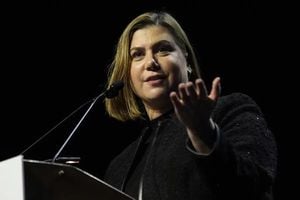For the first time in over a decade, the number of religious individuals in the Netherlands has seen an increase, according to new data from Statistics Netherlands (CBS). In 2024, 44 percent of respondents indicated that they belonged to a church, mosque, or synagogue, up from 42 percent in 2023. This marks a significant shift after a steady decline since CBS began tracking religious affiliation in 2010, when 55 percent of the population identified as religious.
The latest statistics reveal a complex landscape of faith in the Netherlands, with the majority of those identifying as religious being Roman Catholic, followed by Protestants and Muslims. Approximately 17 percent of the population identifies as Catholic, while 14 percent consider themselves Protestant and 6 percent are Muslims. Notably, about 7 percent of respondents subscribe to other religions.
Interestingly, the rise in religious affiliation is not universally felt across demographics. Young people, particularly those aged 18 to 25, are the least likely to identify with any religious group, with over two-thirds of this age group stating they are non-religious. In stark contrast, more than 60 percent of individuals aged 75 and older identify as religious, highlighting a generational divide in religious beliefs.
Despite the overall increase in the percentage of religious individuals, church attendance remains low. Only 13 percent of all religious individuals reported attending a service at least once a month. Among Catholics, the figure is even more striking, with nearly 72 percent stating they rarely or never attend church. In comparison, over half of Muslims attend the mosque at least once a month, while slightly less than half of Protestants go to church regularly.
The findings indicate that while there may be a slight uptick in the number of people identifying as religious, actual participation in religious services is not keeping pace. For example, while 14 percent of the population identifies as Protestant, only about a third attend services weekly. This reflects a broader trend where religious affiliation does not necessarily correlate with active participation in religious practices.
Gender also plays a role in religious affiliation, with women making up 46 percent of religious communities compared to 42 percent of men. This demographic detail suggests that women might be more inclined to maintain ties with religious institutions than their male counterparts.
As society continues to evolve, the implications of these changes in religious affiliation and attendance are profound. The data suggests a potential shift in the cultural landscape of the Netherlands, where traditional religious practices may be waning, but identification with religious groups is beginning to stabilize.
While the increase in religious identification may seem positive, it raises questions about the future of religious institutions in the country. Will churches and mosques adapt to the changing demographics and the apparent disconnect between belief and practice? Or will they struggle to maintain relevance in a society increasingly leaning towards secularism?
As the Netherlands grapples with these questions, the data serves as a reminder of the complexities surrounding faith and community in contemporary society. The slight increase in religious identification could be a sign of a broader search for meaning among a population that has, for years, been drifting away from organized religion.
In conclusion, the recent statistics from CBS reveal a nuanced picture of religion in the Netherlands. While there is a marginal increase in those identifying as religious, the reality of church attendance and active participation tells a different story. As the nation moves forward, the interplay between faith, identity, and community will undoubtedly continue to evolve.





